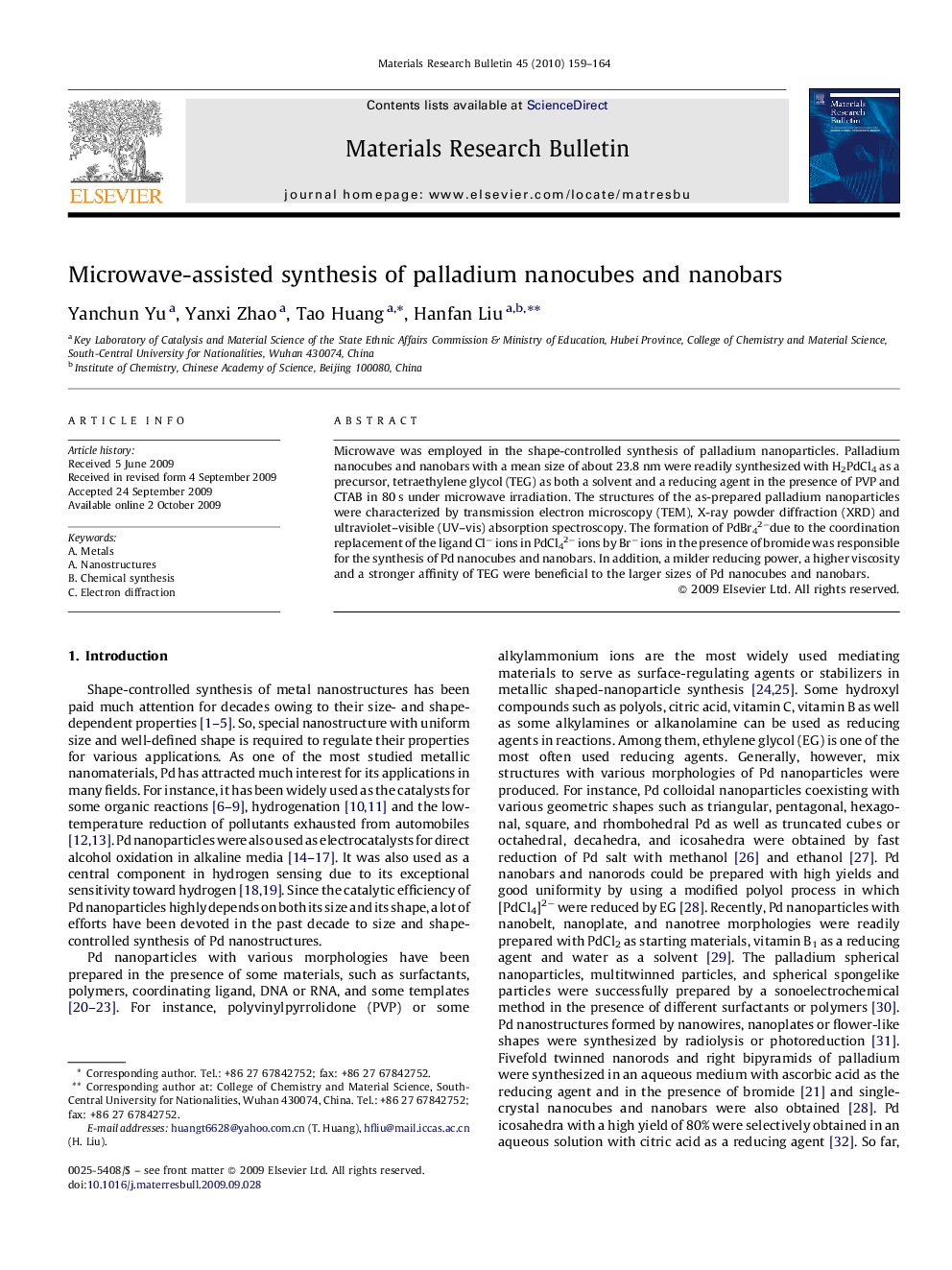| Article ID | Journal | Published Year | Pages | File Type |
|---|---|---|---|---|
| 1490964 | Materials Research Bulletin | 2010 | 6 Pages |
Microwave was employed in the shape-controlled synthesis of palladium nanoparticles. Palladium nanocubes and nanobars with a mean size of about 23.8 nm were readily synthesized with H2PdCl4 as a precursor, tetraethylene glycol (TEG) as both a solvent and a reducing agent in the presence of PVP and CTAB in 80 s under microwave irradiation. The structures of the as-prepared palladium nanoparticles were characterized by transmission electron microscopy (TEM), X-ray powder diffraction (XRD) and ultraviolet–visible (UV–vis) absorption spectroscopy. The formation of PdBr42−due to the coordination replacement of the ligand Cl− ions in PdCl42− ions by Br− ions in the presence of bromide was responsible for the synthesis of Pd nanocubes and nanobars. In addition, a milder reducing power, a higher viscosity and a stronger affinity of TEG were beneficial to the larger sizes of Pd nanocubes and nanobars.
